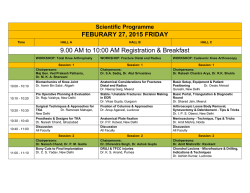
Download [ PDF ] - journal of evolution of medical and dental sciences
DOI: 10.14260/jemds/2015/254
ORIGINAL ARTICLE
OUTCOME OF MANAGEMENT OF CLOSED PROXIMAL TIBIA FRACTURES IN
TERTIARY HOSPITAL OF SURAT
Karan Mehta1, Shiblee Siddiqui2, Prashanth G3
HOW TO CITE THIS ARTICLE:
Karan Mehta, Shiblee Siddiqui, Prashanth G. “Outcome of Management of Closed Proximal Tibia Fractures in
tertiary Hospital of Surat”. Journal of Evolution of Medical and Dental Sciences 2015; Vol. 4, Issue 11,
February 05; Page: 1776-1785, DOI: 10.14260/jemds/2015/254
ABSTRACT: BACKGROUND: Proximal tibia fractures are complex injuries associated with a high
incidence of soft tissue complications. Management of it varies with the type of fracture and its
outcome requires an aggressive approach towards patient, so study was conducted to assess the
outcome of closed proximal tibia fracture management. AIM AND OBJECTIVES: To evaluate the
outcome of various treatment modalities in tibial condylar fractures and to study the advantages and
disadvantages of surgical treatment. comparing treatment modalities and finding management
strategies, depending on type and displacement of fractures. STUDY DESIGN: Prospective type.
MATERIALS AND METHODS: 50 consecutive closed tibial plateau fractures were included in this
study. All fractures were classified according to Schatzker classification. There were 41 men and 9
women. The study was conducted between August 2010 and October 2012 at the Department of
Orthopaedics, New Civil hospital, Surat after the Ethical committee approval. The final outcome was
assessed using the Rasmussen's score. The results were analyzed using different parameters; male vs.
female, age distribution, mode of trauma, functional outcomes and complications etc. RESULTS AND
CONCLUSION: The average age was 40.52 years with the fracture being more common in the 3rdto 5th
decades. Same number of patients had fracture of either limb. 68 % sustained fracture due to road
traffic accident. 84% of the patients had Schatzker type I, IV and type V fractures. The average time of
interval for fracture union was 3.87 months in case of conservative (n=8) method and 3.33 months in
CR – IF (n=16) with cannulated screws and 3.81 months for OR – IF (n=26) with buttress plating.
Thus, the average time of union for CR-IF was shorter than for OR-IF which shows the importance of
preserving fracture site haematoma. 3 patients had infections and loss of reductions each,1 peroneal
nerve injury, 3 knee stiffness, 4 osteoarthritis and 1 malunion with no non-union.
KEYWORDS: Tibial Plateau Fracture; Functional Outcome; Schatzker classification; CR/ORIF- Close
reduction/Open reduction and internal fixation.
INTRODUCTION: Tibial condylar fractures are specially challenging to the orthopaedic surgeons
because of their number, variety, complexity, different concepts of management and injuries
associated with it. As proximal tibia gives attachment to the various elements of knee stabilizers and
being an integral part of the knee mechanism, alteration of anatomy caused by injury, results in
functional impairment. In India, more than anything, extreme flexion is very important as far as our
living habits are concerned. Tibial plateau fracture whether treated conservatively or operatively is
known to cause limitation of knee flexion of varying degrees. Earlier, most of tibial plateau fractures
were treated conservatively which resulted in joint line incongruity, early osteoarthritis and knee
stiffness. Now treatment of these fractures has changed radically over the years, as our ability to
achieve near anatomic reduction and fixation has improved, thereby reducing the incidence of early
osteoarthosis. But varying amount of knee stiffness was noticed and surgery was blamed for it, which
J of Evolution of Med and Dent Sci/ eISSN- 2278-4802, pISSN- 2278-4748/ Vol. 4/ Issue 11/Feb 05, 2015
Page 1776
DOI: 10.14260/jemds/2015/254
ORIGINAL ARTICLE
is being done on an already traumatized knee. Taking all these facts into consideration, a study is
being carried out to know the mode of injury, fracture pattern, outcome of various modalities of
treatment, complications encountered and associated injuries.
AIMS AND OBJECTIVES: To evaluate the outcome of various treatment modalities in 50 cases of
closed tibial condylar fractures and to study the advantages and disadvantages of surgical treatment,
comparing treatment modalities and finding management strategies, depending on type and
displacement of fractures.
MATERIAL AND METHODS: This is a study of management of 50 cases of closed tibial plateau
fractures in adults, conducted in the department of orthopaedics at New Civil Hospital, Surat between
August 2010 to October 2012. Clearance was obtained from hospital ethical committee.
STUDY DESIGN: Prospective study.
SOURCE OF DATA: Patients treated for closed tibial plateau fractures in adults, conducted in the
department of orthopaedics at New Civil Hospital, Surat between August 2010 to October 2012.
SAMPLE SIZE: All patients treated for closed tibial plateau fractures in adults in the department of
orthopaedics, New Civil Hospital, Surat between August 2010 to October 2012 were selected for the
study.
SELECTION CRITERIA: The Inclusion Criteria: All patients with closed tibial plateau fractures in the
age group of 18-60 years treated during the period August 2010 – October 2012, who gave informed
written consent for study. The Exclusion criteria were 1) Fracture in children less than 18 years. 2)
Geriatric patients above 60 years. 3) Compound fracture. 4) Pathological fractures.
The Schatzkers classification was used to classify these fractures.
PROCEDURE: The study was approved by Ethical and Research committee of Government medical
college, Surat. After finding suitability of inclusion and exclusion criteria patients were selected for
study and briefed about the nature of the study, the interventions used and written informed consent
was obtained. The consented patients were enrolled into present study. Further descriptive data of
the participant’s like name, age, sex, detailed history were obtained by interviewing the participants
and clinical examination and necessary investigations were recorded.
At the first visit of patient, the history was taken with general and local examination of the
patient. Once the patient's general condition is stable, relevant X-rays were taken [AP, Lateral views
and stress views if instability suspected].The treatment method was based on the type of fracture, the
amount of displacement and the amount of depression of the tibial plateau. Minimally displaced
fractures were reduced by traction and followed by an above knee cast with the knee in 10° of flexion.
Patients who presented with, extensively comminuted fractures, patients who were not fit for
surgery and those patients with extensive skin problems [i.e. closed fractures but with extensive soft
tissue trauma e.g. Blisters] were initially treated with skeletal traction followed by cast application or
external fixator. Traction was continued till local condition was favourable for cast / surgical
J of Evolution of Med and Dent Sci/ eISSN- 2278-4802, pISSN- 2278-4748/ Vol. 4/ Issue 11/Feb 05, 2015
Page 1777
DOI: 10.14260/jemds/2015/254
ORIGINAL ARTICLE
management. During the period of traction patients were advised isometric quadriceps exercises and
active knee mobilization i.e. traction mobilization. At 6 weeks an X-ray was repeated and if showed
signs of union, the cast were removed and the patients were advised non-weight bearing crutch
ambulation with active knee movements. At 3 months a repeat X-ray was done and based on clinical
and radiological evidence of union partial weight bearing was allowed which was gradually
progressed to full weight bearing.
Surgical method of treatment was mainly based on the type of fracture and amount of
displacement or depression and the degree of instability [detected by stress views]. All surgeries
were done under C-arm image intensifier control. Fractures were fixed either close reduction with
percutaneous technique or MIPPO Technique or by open reduction and internal fixation. Depending
on the fracture pattern either single column or dual column plating was done. The fixation devices
consisted of simple and locking T & L Buttress plate, locking hockey plate, 4.5 mm cortical screws and
6.5 mm cannulated and non-cannulated cancellous screws. Bone grafts were used in depressed and
comminuted fractures. The source of bone graft was ipsilateral iliac crest. Alternately, bone graft
substitutes were also used (Tricalcium phosphate wedge / blocks / granules).
Postoperatively patients were immobilized with an above knee posterior slab or a
compression bandage. The sutures were removed on the 11th postoperative day. Antibiotics were
given till 3rd post-operative day. The patients were advised quadriceps exercises, knee mobilization
on continuous passive mobilization machine [CPM] and non-weight bearing crutch walking, on
discharge. An immediate postoperative X-ray was also done. The follow up were done at 6 week,3
month,6 month and 1 year and were evaluated for infection, loss of reduction, fracture union, weight
bearing and knee range of motion.
OBSERVATION AND RESULTS: Out of 50 patients, 8 patients were treated conservatively and rest
42 were treated surgically.
There is male preponderance in our series with the M:F ratio being 4:1.
AGE: In the present series 68% of patients were between 30-50 yrs. The youngest patient was 18
years old and the oldest 60 years old. The average age was 40.52 years.
MODE OF INJURY: The Road traffic accident was the most common mode of injury in the present
series (68%), remaining 32% were due to fall from height or domestic falls. The delay in discharge
was due to associated injuries or infection.
In the present series’ most of the fractures were of Schatzker[1] Type I, II, III(46%). Our series
is comparable to Nabil series [2] considering the age, sex incidence and mode of injury and the most
common fracture pattern. In this study, 4 patients sustained injury to ipsilateral fibula,1 with
contralateral fibula, 2 with pelvis injury, 1 patient sustained injury to patella, 1 patient's each with
humerus, olecranon.
In our series we have used the Rasmussen Score.[3] As per this system, considering the
conservatively (n=8) treated we had comparable results when compared with Lasinger series.[4] In
CR-IF(n=16) we had 37.5% excellent, 25% good, 25%, fair and 12.5% poor result. In the present
series we had more fair and poor results when compared to R Sament series.[5] In OR-IF(n=26)) we
had 57.7% excellent, 30.7% good, 7.7%, fair and 3.8% poor result, which has better results when
J of Evolution of Med and Dent Sci/ eISSN- 2278-4802, pISSN- 2278-4748/ Vol. 4/ Issue 11/Feb 05, 2015
Page 1778
DOI: 10.14260/jemds/2015/254
ORIGINAL ARTICLE
compared with Nabil series.[2] Range of motion was within the normal functional range. The average
time of union in patients managed by CRIF / MIPPO was a mean of 3.33 months and by ORIF was 3.81
months.
COMPLICATIONS: One of the common complications encountered in plate osteosynthesis group of
patients was infection. The rate of infection was 7.7% (n=2) and H Raza series[6] has 2.4%(n=1)
infection. All the infections were superficial infection and healed with time and antibiotics. There
were no incidences of deep infection or delayed infection in this study. None of the patients managed
by MIPPO technique developed infection. “Favourable outcome is due to less extensive dissection of
soft tissue envelope and de vitalization of fracture fragments.”[6] Posttraumatic osteoarthritis was
seen in 9.2% (n = 4) of the 42 patients managed surgically. In this study the incidence of secondary
arthritis was more common in type IV and VI injuries. Current study shows no incidence of nonunion, whereas Nabil et al study[2] shows 1.7 % incidence of non-union.
DISCUSSION: This is a study of management of closed tibial condylar fractures involving 50 patients
and followed up over a period of 2 years. 8 patients were managed by conservative methods and
remaining 42 patients were managed by surgical methods. Conservative treatment included closed
reduction, traction mobilization and above knee cast application while surgical management included
CRIF with cannulated cancellous screws / MIPPO Technique or ORIF with plate osteosynthesis; with
or without bone grafting. Functional evaluation of the knee was done, based on the Rasmussen‘s
scoring system. The prognostic factors for condylar tibia fracture include age, intra articular
involvement, method of treatment, timing of joint mobilization etc. Multiple articles have been
published documenting superior functional results using internal fixation (Nabil series,[2] H Raza
series,[6] R Sament series[5]). The result and observation of the present study is compared with the
other similar studies which are depicted in tables.
Major contributing factors were:
1. Improper fixation due to complexity of comminution or surgical technique.
2. Elderly age group constituted majority, who were less motivated than young people to initiate
exercises. Their bones were osteoporotic with very low osteogenic potential.
3. Delay in surgery was a factor which resulted in bad results.
CONCLUSION: Though the series is small and period of follow up is small to draw definitive
conclusions with complete physical examination is most vital. Radiographic examinations with good
quality x rays are required for classification and to decide on the management and for post-operative
follow up. Preoperative and postoperative examination of neurovascular status of injured limb is of
paramount importance. A good surgical technique, respect for soft tissue will minimize intra and
post-operative complications. The choice of surgical approach for plate osteosynthesis should be
based on direction of displacement of fracture fragments. A strong association exists between
development of osteoarthrosis and residual displacement of articular fragments at the time of
osseous union. Clinically patient can have excellent or good functional outcome irrespective of
radiographic evidence of osteoarthrosis. Factors such as size, number and location of articular
fracture fragments may be more important prognostically. Displacement of fracture fragments is
J of Evolution of Med and Dent Sci/ eISSN- 2278-4802, pISSN- 2278-4748/ Vol. 4/ Issue 11/Feb 05, 2015
Page 1779
DOI: 10.14260/jemds/2015/254
ORIGINAL ARTICLE
always a possibility following treatment. Fracture healing is usually not a problem as fracture is at
metaphyseal cancellous bone with plenty of blood supply. A good postoperative physiotherapy is of
help in gaining better functional results. We conclude that surgery is the treatment of choice for
displaced fractures belonging to Schatzker type I and II. Schatzker's type III fractures can be managed
conservatively if the depression is less than 5 mm. Schatzker's type IV, V and VI should be managed
surgically with plate osteosynthesis especially in young individuals who require perfect anatomical
reconstruction of the articular surface, stable fixation and early mobilization. Minimally invasive
percutaneous plating [MIPPO] is a good alternative to ORIF and minimizes risk of infection.
ACKNOWLEDGEMENT: The author did not receive any grants or outside funding for support of the
research or preparation of the manuscripts. No funding was received for this work from any of the
organization.
REFERENCES:
1. Hohl M. Part-I: fractures of proximal tibia and fibula. In: Rockwood C, Green D, Bucholz R, eds.
Fractures in adults, 3rd ed. Philadelphia: JB Lippincott, 1991; 1725-1761.
2. Nabil A Ebraheim et al. Open reduction internal fixation of 117 tibial plateau fractures.
University of Ohio, Spotlight hip and knee DEC 2004; Volume 27: page 12.
3. Rasmussen DS. Tibial condylar fractures, Impairment of knee joint stability as an indication
of surgical treatment. JBJS 1973; 55: 1331.
4. Lansinger O, Bergman B, KornerL. Tibial Condylar fractures, a twenty-year follow up. JBJS
1986; 68: 13-19.
5. R Sament et al. Closed reduction and percutaneous screw fixation for tibial plateau fractures.
PGI – Chandigarh. Journal of orthopedic surgery 2012; 20 (1): 37-41.
6. H Raza et al. Minimally Invasive Percutaneous Plate Osteosynthesis in tibia plateau fractures.
Journal of Orthopedic surgery 2012; 20 (1): 42-7.
Age (yrs) Frequency Percentage
18-30
7
14
30-40
11
22
40-50
23
46
50-60
9
18
Total
50
100.0
Table 1: age incidence:
Sex
Frequency Percentage
Male
41
82
Female
9
18
Total
50
100.0
Table 2: SEX INCIDENCE
J of Evolution of Med and Dent Sci/ eISSN- 2278-4802, pISSN- 2278-4748/ Vol. 4/ Issue 11/Feb 05, 2015
Page 1780
DOI: 10.14260/jemds/2015/254
ORIGINAL ARTICLE
Frequency
Percent
Right
25
50
Left
25
50
Total
50
100.0
Table 3: Frequency of Side of injury
Frequency
Percent
Fall (L)
11
22
RTA
34
68
Fall (H)
5
10
Total
50
100.0
Table 4: MECHANISM OF INJURY
The mechanism of injury was grouped into 2 categories. High velocity trauma including road
traffic accidents and fall from > 10 feet height. Low velocity injuries were due to fall on ground level
or <10 feet height. 68% of the patients sustained injury secondary to RTA, 22 % due to fall from a
level surface[0 to 10 feet height] and the rest 10% due to fall from a height [10 feet or higher]. Major
cases were due to high velocity trauma {68 %}.
Type of Fracture
Frequency Percent
(Schatzker's Cl.[1])
I
16
32
II
6
12
III
1
2
IV
11
22
V
15
30
VI
1
2
Total
50
100.0
Table 5: TYPE OF FRACTURE:
J of Evolution of Med and Dent Sci/ eISSN- 2278-4802, pISSN- 2278-4748/ Vol. 4/ Issue 11/Feb 05, 2015
Page 1781
DOI: 10.14260/jemds/2015/254
ORIGINAL ARTICLE
Treatment
Late Complications
No
Anterior knee pain
Knee instability
Knee stiffness
Osteoarthritis
Mal union
Total
Conservative
Cannulated
Cancellous screws
Buttress
Plating
Total
No.
4
12
21
37
%
50%
75.0%
80.1%
74%
No.
1
0
1
%
12.5%
0%
2%
No.
2
0
2
4
%
25%
0%
7.7%
8%
No.
1
0
2
3
%
12.5%
0%
7.7%
6%
No.
0
4
0
4
%
0%
25%
0%
8%
No.
0
0
1
1
%
0%
0%
3.85%
2%
No.
8
16
26
50
%
100.0%
100.0%
100.0% 100.0%
Table 7: LATE COMPLICATIONS
The average time of union for CR-IF was shorter than for OR-IF which shows the importance
of preserving fracture site hematoma.
J of Evolution of Med and Dent Sci/ eISSN- 2278-4802, pISSN- 2278-4748/ Vol. 4/ Issue 11/Feb 05, 2015
Page 1782
DOI: 10.14260/jemds/2015/254
ORIGINAL ARTICLE
N
8
21
21
50
Conservative
CR – IF
OR – IF
Total
Mean
3.875
3.33
3.81
3.67
Table 8: AVERAGE TIME OF FRACTURE UNION
The results of the conservative management revealed excellent in 12.5%, good in 50%, fair in
25% and poor in 12.5%.The results of the surgical management revealed excellent in 50%, good in
28.57%, fair in 14.28% and poor in 7.14%.
RESULTS OF CONSERVATIVE VS SURGICAL TREATMENT:
Poor
Fair
Conservative
Good
Excellent
Total
Poor
II
Type of Fracture
III
IV
No.
%
25%
No.
1
1
2
%
25%
100%
25.0%
No.
1
1
2
4
%
25%
100%
100%
50%
No.
1
1
%
25%
12.5%
No.
4
12.5%
0
1
Good
No.
No.
0
0
1
0
2
1
3
3
%
25%
50%
7
2
0
0
0
8
12
6
% 100.0% 100.0%
2
1
3
100%
7.14%
1
6
22.22% 7.14%
0
3
14.28%
3
12
33.33% 21.43%
0
% 58.33% 33.33%
No.
2
22.22%
No.
Excellent No.
Total
2
% 100.0% 100.0% 100.0% 100.0% 100.0% 100.0% 100.0%
% 16.67% 16.66%
Surgery
VI
1
%
Fair
V
Total
I
1
0
2
28.57%
10
21
22.22% 71.43%
14
9
100% 100.0% 100.0%
50%
1
42
100% 100.0%
Table 9: COMPARATIVE STUDY OF FUNCTIONAL EVALUATION
FOLLOWING CONSERVATIVE AND SURGERY
J of Evolution of Med and Dent Sci/ eISSN- 2278-4802, pISSN- 2278-4748/ Vol. 4/ Issue 11/Feb 05, 2015
Page 1783
DOI: 10.14260/jemds/2015/254
ORIGINAL ARTICLE
Schatzker
Schatzker Type IV Schatzker Type V , VI
Type I, II, III.
Study
Current
( n=50 )
46 %
22 %
32 %
Nabil et el
( n=117 )
63.2 %
5.1 %
31.7 %
Table 10: INCIDENCE OF FRACTURE CLASSIFICATION
Detailed analysis of demographic data showed that “Younger male patients tend to sustain
fractures secondary to high velocity trauma such as a road traffic accident or a fall from height,
while older patients tend to sustain fractures due to low velocity trauma such as a fall from low
level.” [$$$]
COMPARISON BETWEEN RESULTS OF CURRENT STUDY AND LASINGER ET AL STUDY[4]:
Schatzker
Type – I, II, III
Schatzker
Schatzker
Type - IV
Type – V, VI
Rasmussen score
Current
Current
Current study Lasinger
Lasinger
Lasinger
study
study
EXCELLENT
GOOD
FAIR
POOR
TOTAL (n)
1
23
0
5
0
8
20%
79.31%
0%
35.7%
0%
44.44%
2
5
2
9
0
7
40%
17.24%
100%
64.3%
0%
38.88%
1
1
0
0
1
1
20%
3.45%
0%
0%
100%
5.55%
1
0
0
0
0
2
20%
5
0%
29
0%
2
0%
14
0%
1
11.11%
18
Table 11: RESULTS OF CONSERVATIVE TREATMENT
The results of functional evaluation of the knees treated by CR – IF with cannulated
cancellous screws showed 62.5% good to excellent results and 37.5% fair to poor results. R Sament
et al[5] in their study of percutaneous fixation of closed tibia plateau fractures found 85.7% good to
excellent results and 14.3 % fair to poor results.
J of Evolution of Med and Dent Sci/ eISSN- 2278-4802, pISSN- 2278-4748/ Vol. 4/ Issue 11/Feb 05, 2015
Page 1784
DOI: 10.14260/jemds/2015/254
ORIGINAL ARTICLE
COMPARISON BETWEEN BOTH STUDIES:
Rasmussen Score
EXCELLENT
GOOD
FAIR
POOR
Total ( n )
Current study R Sament et al[5]
(n=16)
(n=56)
6
20
37.5%
35.7%
4
28
25%
50%
4
6
25%
10.7%
2
2
12.5%
3.57%
16
56
Table 12: RESULTS OF SURGICAL TREATMENT:
Rasmussen Score
EXCELLENT
GOOD
FAIR
POOR
Total
Current study H Raza et al[6] Nabil et al[2]
( OR-IF )
( OR-IF/MIPPO )
( MIPPO )
15
18
78
57.7 %
8
30.77 %
2
7.7 %
1
3.85 %
26
43.9 %
19
46.34 %
4
9.75 %
0
0%
41
66.67 %
16
13.67 %
13
11.11%
10
8.5 %
117
Table 13: Comparison of OR-IF results
AUTHORS:
1. Karan Mehta
2. Shiblee Siddiqui
3. Prashanth G.
PARTICULARS OF CONTRIBUTORS:
1. Orthopaedics Consultant, Department of
Orthopaedics, D. N. Mehta Hospital, Surat.
2. Senior Resident, Department of
Orthopaedics, Bombay Hospital.
3. Senior Resident, Department of
Orthopaedics, Mandya Institute of
Medical Sciences, Mandya.
NAME ADDRESS EMAIL ID OF THE
CORRESPONDING AUTHOR:
Dr. Karan Mehta,
Bungalow No. 37/38,
Vrundavan Enclaves,
Vesu, Surat, Gujarat-395007,
E-mail: [email protected]
Date of Submission: 10/01/2015.
Date of Peer Review: 12/01/2015.
Date of Acceptance: 27/01/2015.
Date of Publishing: 03/02/2015.
J of Evolution of Med and Dent Sci/ eISSN- 2278-4802, pISSN- 2278-4748/ Vol. 4/ Issue 11/Feb 05, 2015
Page 1785
© Copyright 2025
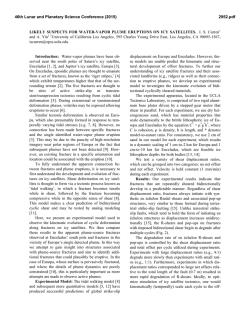
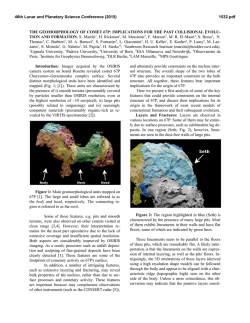
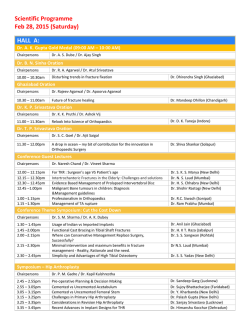
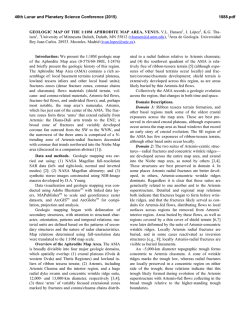
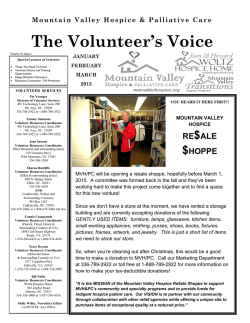
![Download [ PDF ] - journal of evidence based medicine and](http://s2.esdocs.com/store/data/000499424_1-04d992fdfa565a1fea9304f6c0faeaf7-250x500.png)
